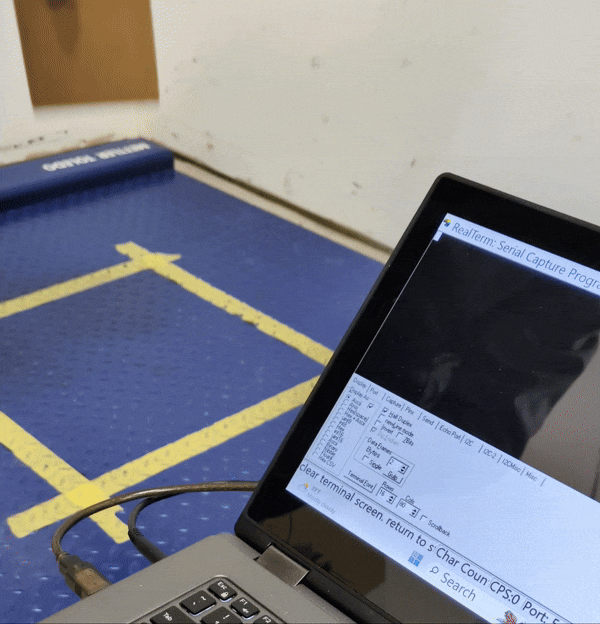Why You Should Never Drop Items on Your Digital Scale
Apr 8th 2025
Digital scales are used in almost every step of the supply chain, from raw materials, to finished goods, to retail sales. Not too many people give the scales they use daily a second thought, much less how they use them. Most end-users know the basics: add the item, let the weight settle, record the results. We're going to focus on that first step, adding the item to be weighed.
In a perfect world, packages and materials would be placed gently on a scale every time. However, that's not always the case. As with any electronic device, there are physical limitations to how scales can be used. Scale users often take the device for granted and typically are more focused on productivity, especially in fast-paced environments. Packages may be tossed or dropped on a scale which can have some adverse effects. Let’s dig deeper and see just what happens when a scale is shock loaded.
How Impacts Affect Scales
Load cells are the heart of a digital scale. They are the primary component responsible for the measurement of force. Load cells are like springs in that they should return to their unloaded position any time a weight is removed. The deflection caused by a force being applied transforms the millivolt signal which the indicator uses to display the weight value. Shock overloading a load cell, like dropping something on it, can permanently deform this “spring” which leads to inaccurate readings. In extreme cases, load cells can become damaged to the point of complete failure.
Overload Protection
Most digital scales have some form of overload protection. Methods vary from overload indicators, physical stops, and heavier duty electronics. Most manufacturers list safe overload at 150% of capacity. For example, if a scale is rated for a 300-pound capacity, it can safely weigh up to 450 pounds. Beyond this limit, the scale is at serious risk of permanent damage that typically starts with the deforming of the load cell. It should be noted that even continually exceeding the rated capacity repeatedly or via impack (shock load) can prematurely degrade load cells even if immediate permanent damage isn't noticable.
With these protections in place, why should a user worry about shock loading a scale? Let’s discuss how easy it is to exceed that 150% overload protection.
Impact Force
If a 5-pound weight was dropped onto a scale from 1 meter high, how much force would the scale take? 5 pounds? 10 pounds? How about using F=MA? It seems like a simple answer but is anything but simple. Calculating impact force is challenging because of several factors. The complex nature of an impact often involves extreme changes in velocity, acceleration, and force. The materials that are interacting with each other will deform, but this may be in an elastic way where it springs back, or permanently deform.
To further complicate the matter, impact forces happen over very short time intervals, usually in milliseconds or microseconds. This makes recording real-world examples difficult without expensive equipment. Impact forces typically peak and then dissipate quickly which makes capturing an accurate measurement even more demanding.
The force calculation is dependent on this time interval. An air bag is a great example of a real-world situation. The air bag increases the time it takes for a person to hit the steering wheel, thus reducing the overall impact force. The time interval and force values are inversely related. The smaller the time of impact, the larger the force imparted, and the opposite is true. This is also why we highly recommend that you add as much packing material when shipping your scales as possible to increase the amount of time of any impact from the shipping process.
Real-World Example
We’re but humble scale people, so we’re not going to attempt to explain the math behind all this. We prefer to show a real example instead. We hooked up a Rice Lake 920i Programmable Indicator to a drum scale base and a PC to demonstrate different impact scenarios. The Rice Lake 920i allows us to set its filtering to 960 Hz, effectively allowing us to sample weight 960 times per second. This allows us to capture a bit of what the scale is “feeling” when a weight is dropped from different levels.
Remember, impact forces typically peak and subside quickly and even at 960 readings a second, we may be capturing the weight just before or after the peak. Even so, this means the peak impact force is likely higher than what we were able to capture.

For our test, we dropped a package that contained a 5lb calibration weight. Notice that at hip height, the force captured was over 40 times the actual weight of the package at 200.84 lbs. Now, we don’t want to damage our scale which is why we chose a 5lb weight instead of a 1,000lb weight. This drum scale has a capacity of 2500lbs, well over the forces that are being exerted by our 5lb weight.
Damaged Scale Repair
Damaged equipment? Scales Plus has you covered. We have one of the largest selections of load cells and scale repair parts available in the industry. And if you'd like the professionals to repair your damaged scales, we've got that handled as well.






